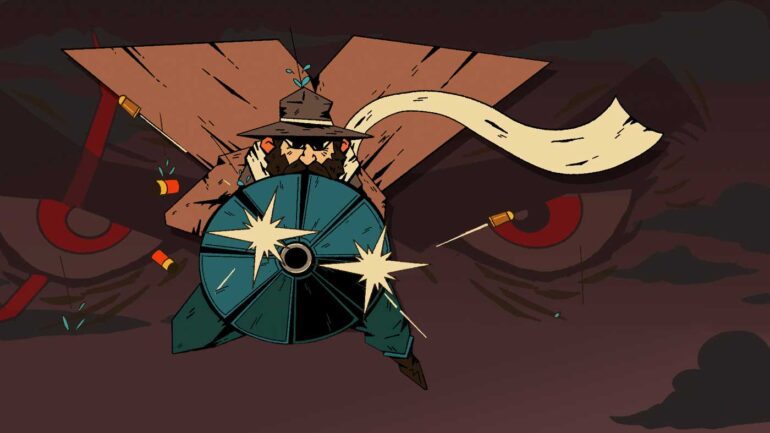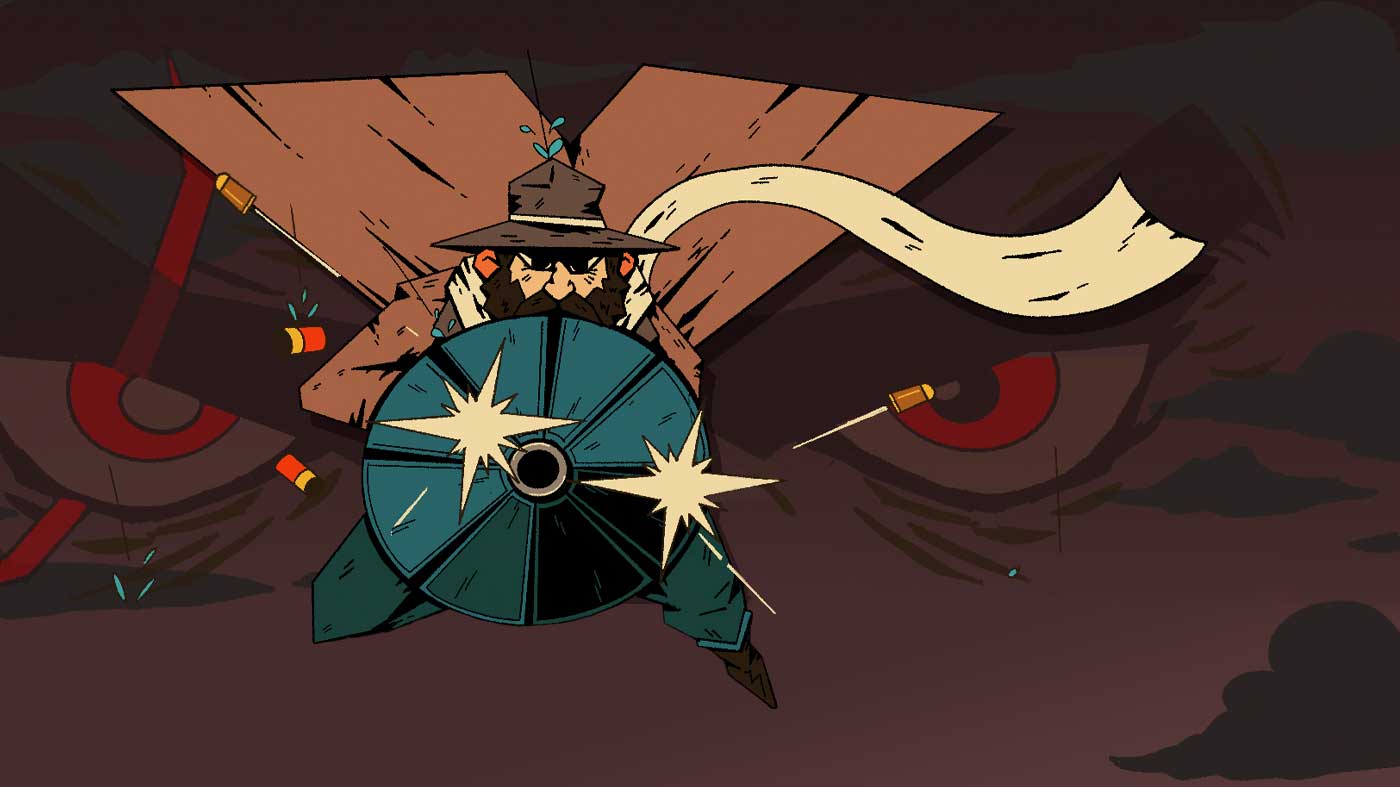When I previewed Gunbrella a couple of months ago, I did note that it could be yet another surprise packet in a calendar year that has delivered so many to date. It has proven to be a slick, stylish action-shooter that, like so many Devolver Digital published titles before it, marries combat with pacy, balletic movement to establish a hypnotic flow state of spent shells, Mary Poppins-esque soaring, and bleak rainfall which might warrant a brolly.
The main hook of Gunbrella is its titular blunderbuss, arguably one of the medium’s most bloody cool multi-tools. It presents savagery behind a mask of unrelenting flair, as reducing foot soldiers to a pile of muck before flying away in an updraught will likely go down as one of the year’s most satisfying gameplay loops and it never gets old throughout the game’s near-ten hour runtime. Although there are plenty of ammo types to pick from, I do think granting players an infinite pool of regular shotgun shells to pull from was an inspired choice. Dragged along by your magical umbrella, you practically dance from screen-to-screen, and I do believe the swiftness of it all might have been lost had the team decided to bog things down with scavenging lean amounts of ammo or crafting which, in context, could have made a lot of sense.
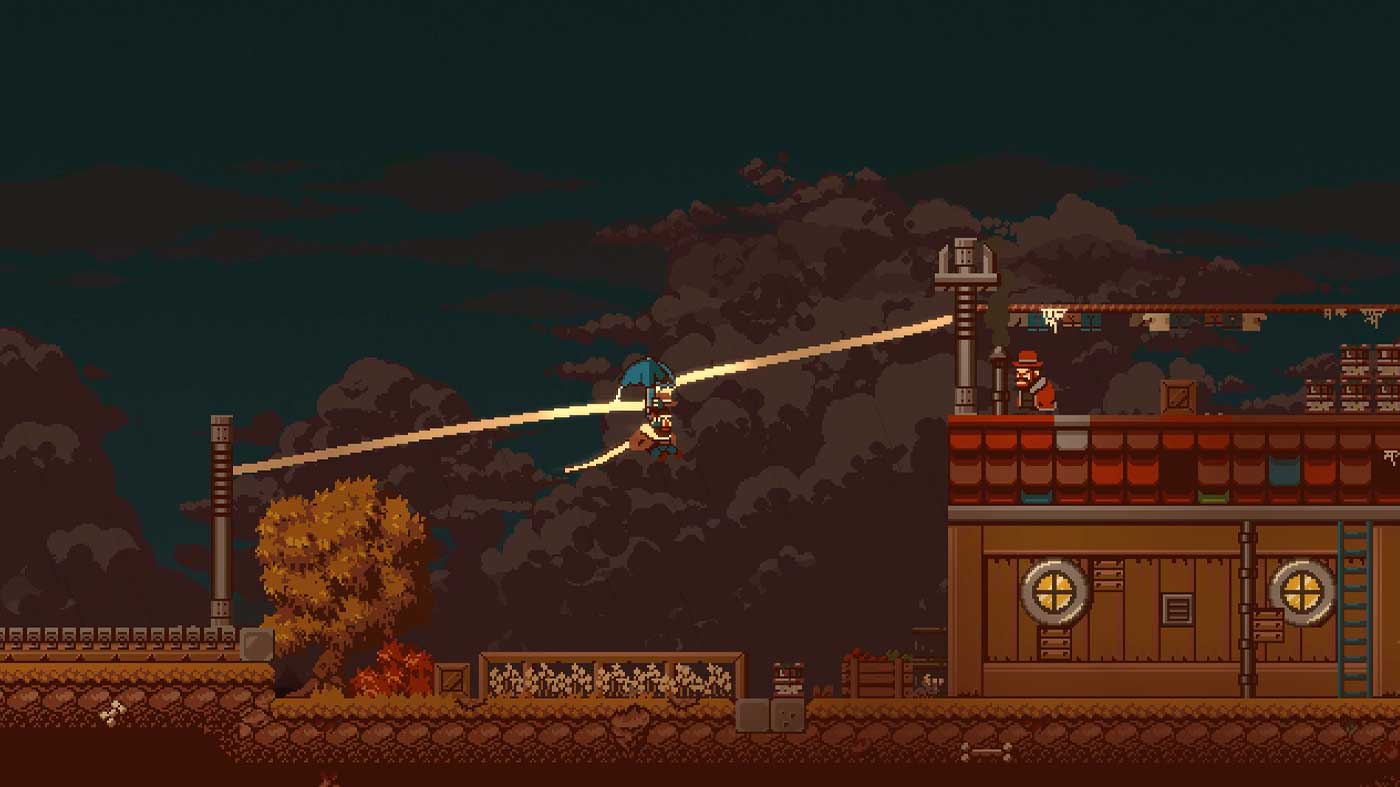
The one downside to the game’s combat, as delightfully gruesome as it can be, is that it leans a little to the easier side of things. The base blunderbuss is so powerful, you’re never really forced to throw a Hail Mary hand grenade, or plant strategic sticky bombs. It ends up feeling one-note, even if it is note perfect. You might work up a sweat exorcising a couple of the gnarled abominations that present as big boss encounters, but even they are ultimately pretty susceptible to cheese tactics most of the time.
After a quiet, gruff gunman finds his wife slain and his daughter missing, he finds the Gunbrella, a half gun-half umbrella implement, at the scene of the grisly murder and takes it along with him to exact his especially violent vengeance. What unfurls is a conspiracy of several moving parts, like the Parasol Gunmen, a haven called Avalon, and science gone haywire in the form of harsh, supernatural abominations that plague the townships. I admire the team’s willingness to not only pour every insane idea they had into Gunbrella, but to make them coherent. It’s an insanely wild ride, but I adore the lore and world-building packed into the game’s many backwater towns, from Orwell to Avalon.
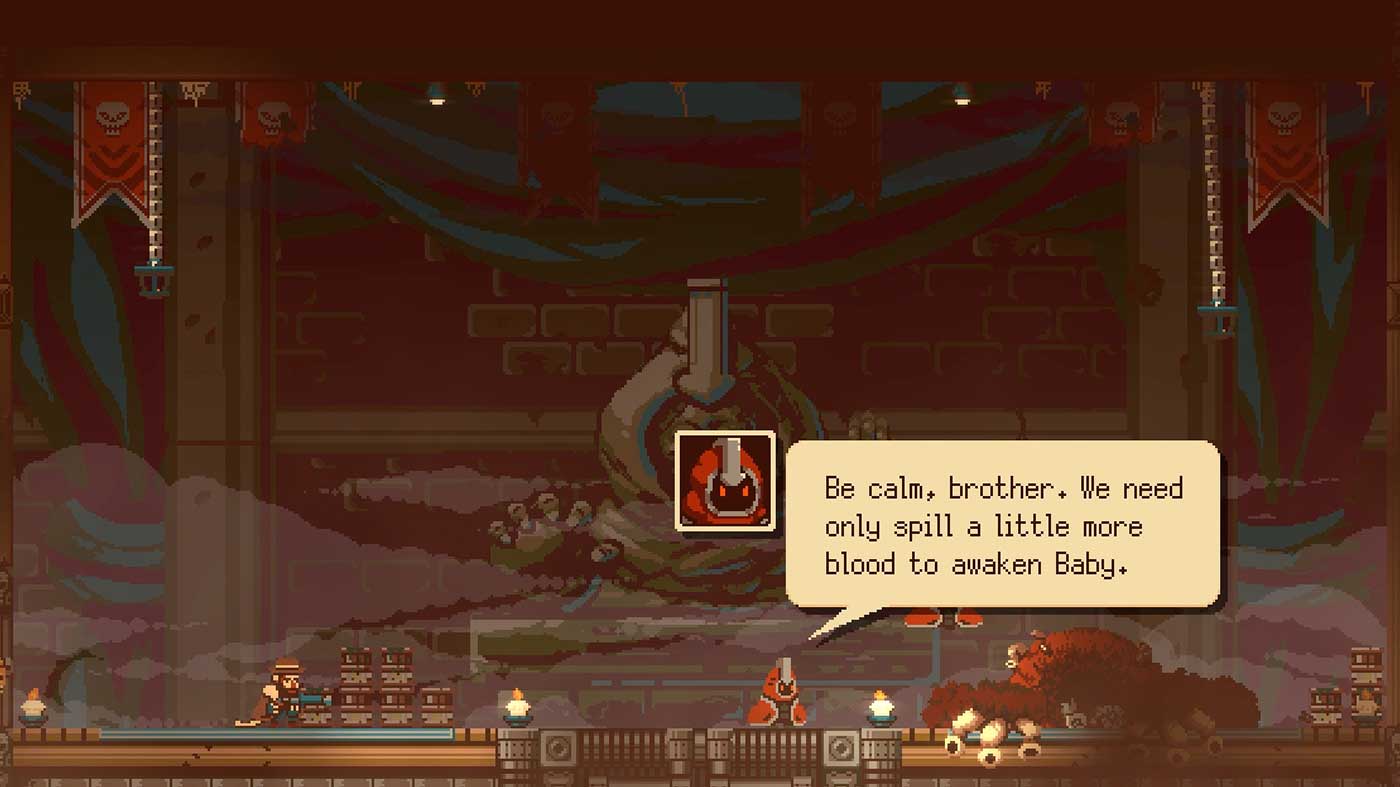
Much like the rail system that pulls Murray from town-to-town in a straight line, the story is relatively linear. And although it arrives at the same endpoint, there is a lot of opportunity for the player to add flavour at certain forks in the road along the way through some cool side quests. There were choices I did wrestle with, which I think is worth commendation to the team for building out the world, its characters, and lore to the point where I’m made to care. The whole subplot that revolves around the character Goldenrod, for example, is just terrific from start to finish.
Given there’s no real map or waypoint system, keeping the objectives straight across the span of five settlements can be a bit of a trial. Murray’s stained journal serves as a neat in-game means of cataloguing goals and inventory, however it’s limited in the information it presents meaning missing the occasional once-off exposition from a quest-giver can mean wandering aimlessly searching for the point of interest.
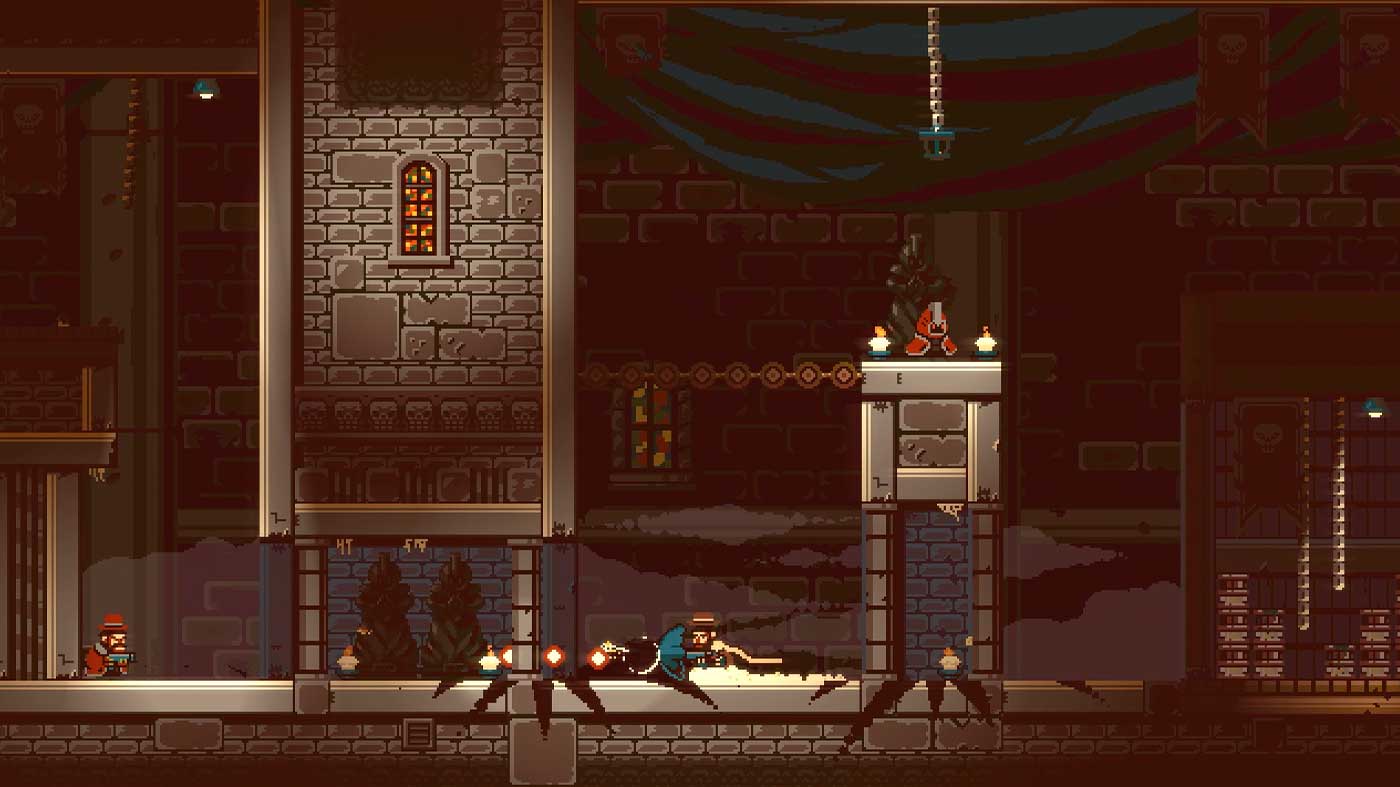
As I mentioned earlier in the piece, Gunbrella’s world is so believably disparate, I could imagine a build of the game where scrapping and scavenging for parts and resources fed into a crafting mechanic. Fortunately, for the sake of action it’s all streamlined through a couple of straight-forward currencies and the wares-peddlers who are all very willing to trade you for them. Gold is used to buy bandages and all manner of ammo you’re unlikely to want, while spare parts can be used to upgrade the Gunbrella at the Tinkerer’s underground workshop that’s fit for a hermit. They’re simplistic systems, but I appreciate that they keep out of fun’s way and let the game lean more on its strengths.
Describing the game’s world as miserable would be an understatement. Its brand of cartoonish violence is housed within a world of industry, so it’s definitely heavy on the brown and grey tones. Despite this, the game is devastatingly good looking and is further proof that pixel art can be gritty, creepy, and unsettling. It certainly helps that the game’s animation and map design, with its tunnels as tangled as the cords behind my television, sell the slick manoeuvrability of the titular shotty.
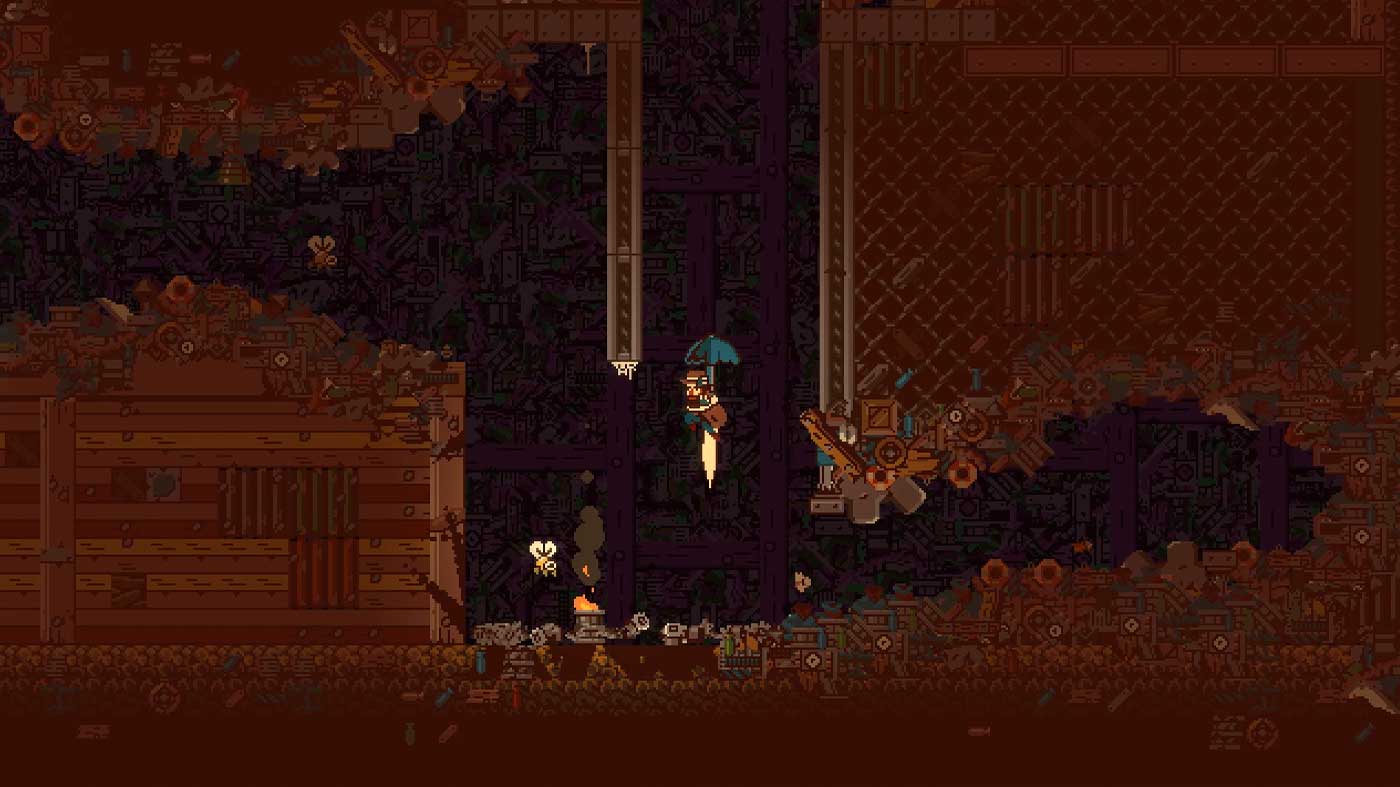
While there are a couple of things I might have changed about it, Gunbrella is a slick action-shooter that has a few very key things working in its favour. Its world is one you’d happily spend hours peeling back the curtain on, upending the supernatural cabal threatening the town’s fabric. Its key feature, the Gunbrella, is a badass device so baked into the game’s core experience, which they’ve nailed the feel of.
It turns out that gliding, swinging, and dashing through browntown with a bulletproof brolly in hand really is the coolest thing.


